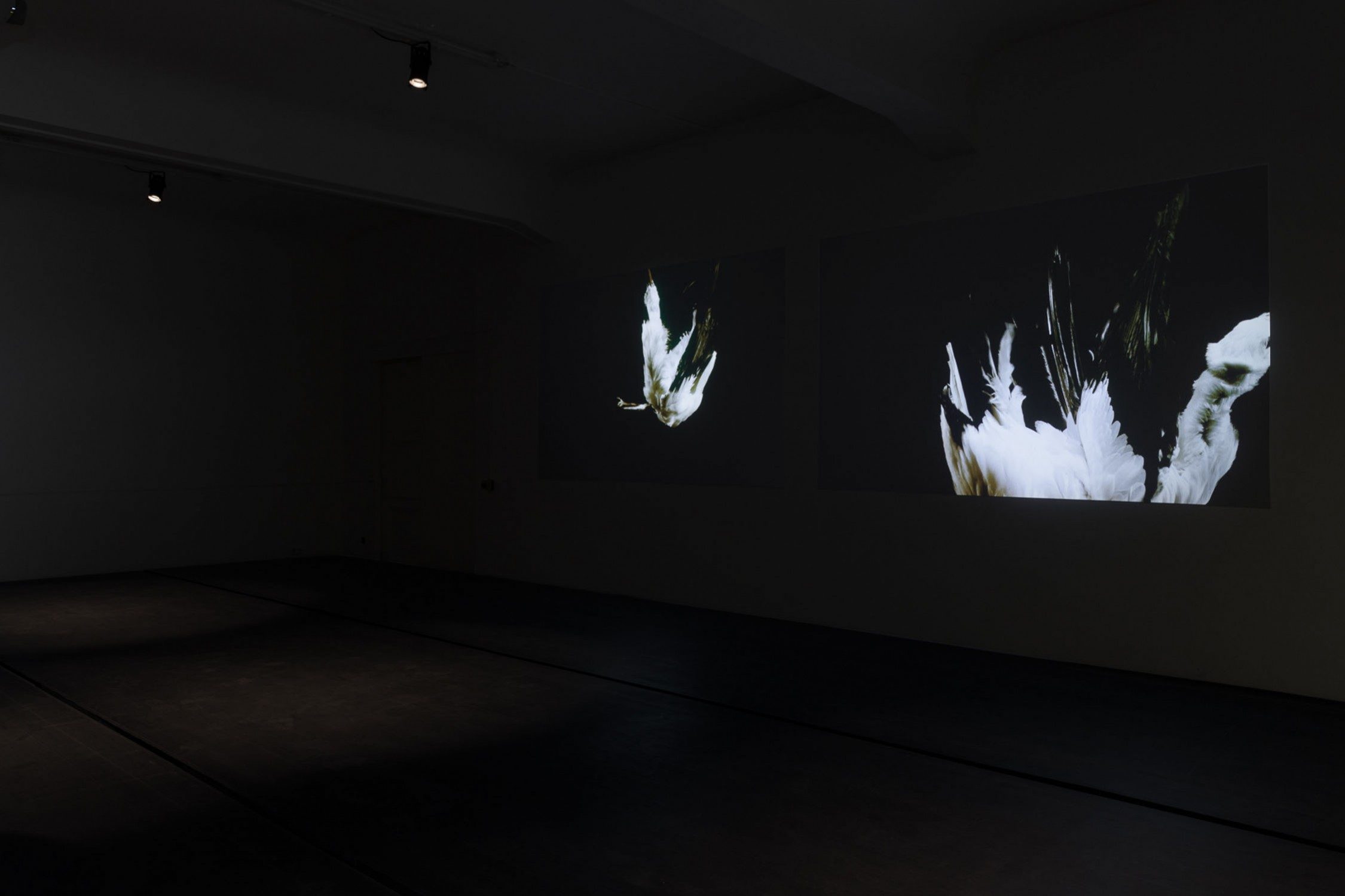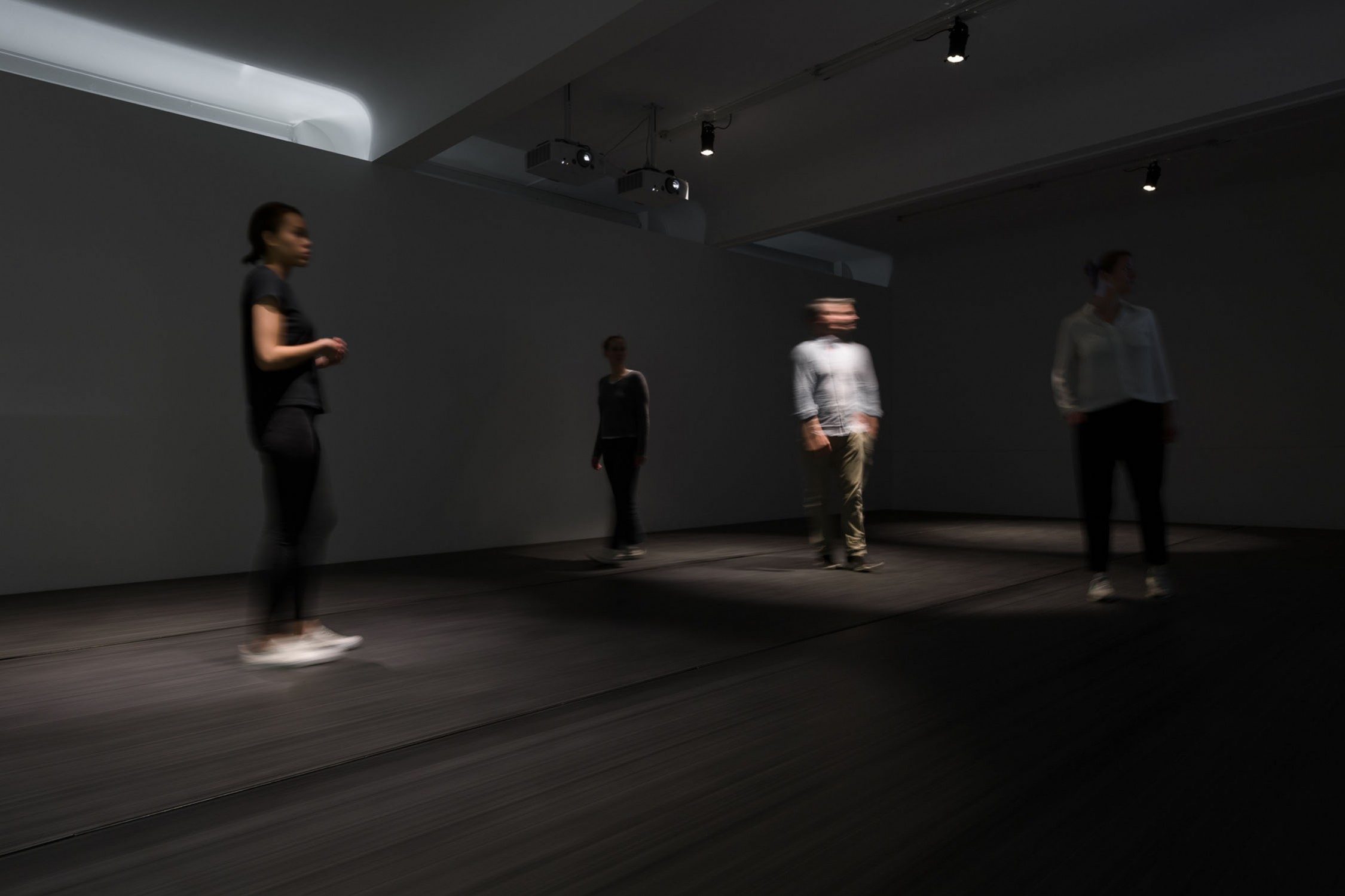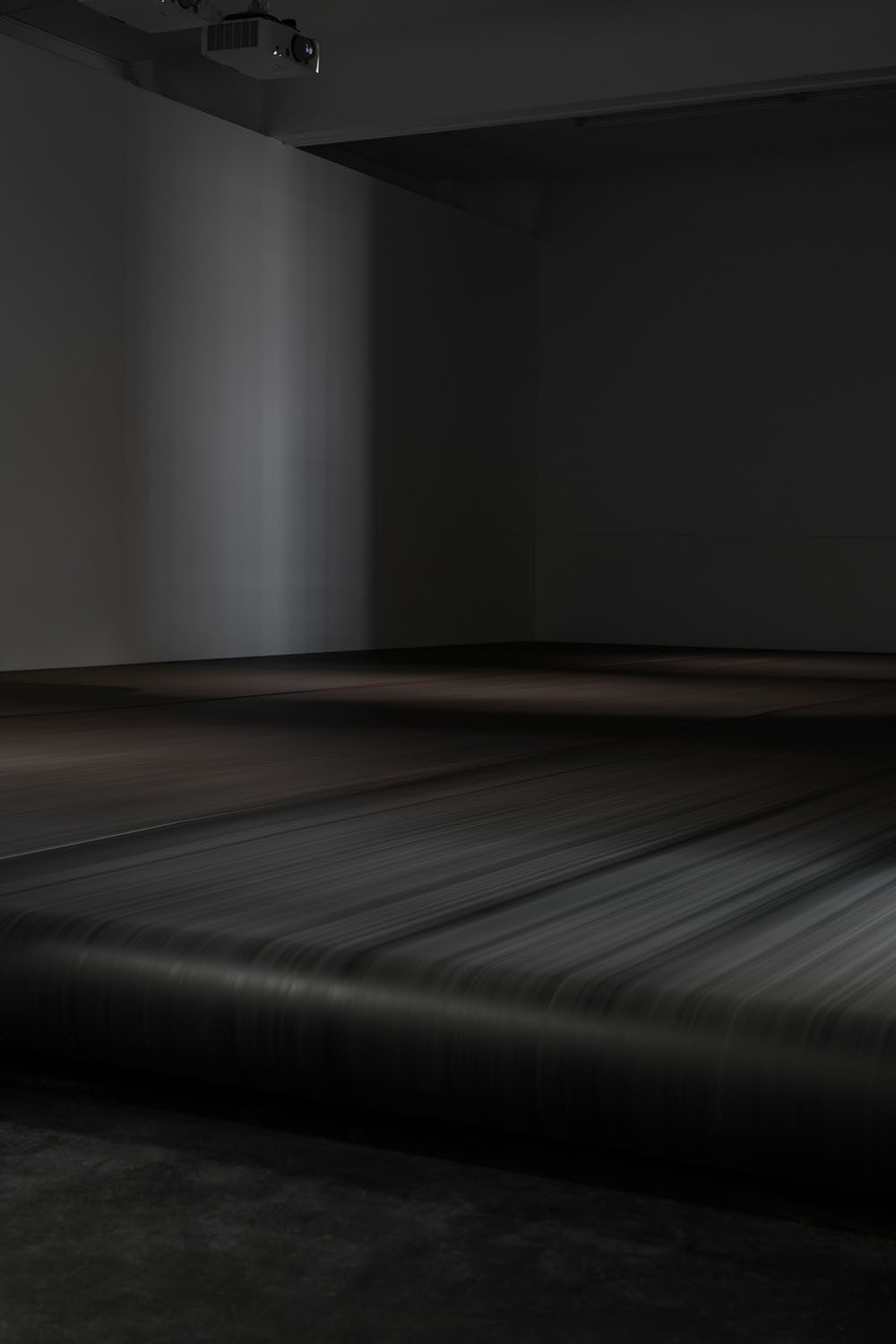






Forces that affect us
Many centuries after a universal genius like Leonardo da Vinci, artists who are also inventors are somewhat rare today. Julius von Bismarck is one of the exceptions. He won a prize at the Ars Electronica in Linz in 2008 with a device that generates projections that creep unnoticed into images when taking photographs. Much of what the artist has presented to us since then also initially seems like a technical invention that has crept into an art context.
In 2015, for example, he built a concrete bowl that rotates 15 times a minute, which he presented at Art Basel Unlimited. Julius von Bismarck sat in this bowl for days. He ate, read, slept and carried out his regular business in it. Everything was almost normal, except that the outside world and the people watching him were for him blurred and he could not understand what they said. But suppose we were all sitting on such a rotating bowl: wouldn’t we experience the world as normal as Julius von Bismarck appeared to for a week?
With this “Egocentric System” the artist also reminds us of the fact forgotten by some people that, even if we perceive the world from within our bodies, we are not its centre. That sounds banal, but it is not. After all, more or less all of humanity believed for a long time that just because it lives on earth, it must also be the centre of the universe around which everything else revolves.
We do not notice that the world beneath our feet is continually revolving because we only perceive our own movement. We have to think about the earth’s movement because we cannot see or feel it. Peter Sloterdijk made the point in 1987 that scientific “progress” which rejected appearances also brought losses. In “Kopernikanische Mobilmachung und ptolemäische Abrüstung” (“Copernican Mobilisation and Ptolemaic Disarmament”), he wrote: “The Copernican shock demonstrates that we do not see the world as it is, but rather that we have to cognitively imagine its ‘reality’ in opposition to our senses in order to ‘grasp’ what is happening with it. There lies the dilemma: when the sun rises, the sun does not rise.”
Sloterdijk sees it as a task of art to let the sun rise again without falling back into pre-scientific irrationality. Julius von Bismarck is an artist who appears to take up this task in an exemplary manner. He uses a broad range of technical equipment whose ultimate purpose is to make visible and perceptible things that were previously beyond immediate experience.
What he expects from his visitors in the exhibition, “Immer noch der Lauf der Dinge” (Still the Way Things Go), is not quite as drastic as that to which he subjected himself to in “Egocentric System”. But he takes the ground from under our feet. Whoever enters the alexander levy gallery immediately stands on a treadmill that covers the whole gallery floor. To come in at all, one must walk faster than the treadmill going in the opposite direction. A walking speed exactly matching that of the treadmill but in the opposite direction is necessary to stay in one position and not be driven against the wall. You also synchronise yourself with other visitors, who do the same.
Treadmills move us forwards. We know that from airports, where we are “pushed” to the gate, to remote terminals or the exit. But are we not also like a treadmill when we take part in demonstrations, marching in step with others? Are we not then also moved by external forces although we think we are acting on our own volition? The association with a political demonstration arises with the title of an installation: “One Solution Revolution”, the slogan of communist youth organisations.
And what does the outer world consist of when we are moving on the treadmill? In the predominantly dark space, we see two projections on the wall. Different animals – a fox, a racoon and a stork – appear to float weightlessly in the room, like astronauts in outer space. But they are not moving; they have not been able to for a long time. They are long dead, prepared by a taxidermist. The movements they appear to make come from the wind that blasts from below and prevents them falling to the ground. The animals are in a large wind tunnel used, amongst other things, to learn parachuting.
Julius von Bismarck calls this video piece “Animals are Angels with Fur”. Perhaps animals do have a soul, float in heaven and look down upon us, although we think we are observing them. Perhaps they also think that the people who are teetering so strangely in the gallery are also dead and their stuffed shells are moved by external forces so that they appear to be alive.
Julius von Bismarck’s art, which is difficult to place into categories such as sculpture, action, installation, etc., is perhaps best described as “experimental arrangements”. This term has already been used for Bruce Nauman’s work (an exhibition from the pioneer of video and installation in 1998 in the Hamburg Kunsthalle was so titled). Bauman was always interested in self- and interpersonal experience and confronted the viewer with situations that touched on existential sensitivities. These are also the concerns of Julius von Bismarck, who is not just a technical inventor or “would-be physicist”, as he calls himself. His technical experiments are aimed not least at the question of whether perhaps more direct connections between physical and social forces exist than is generally assumed.
Text Ludwig Seyfarth
Installation views: Trevor Good